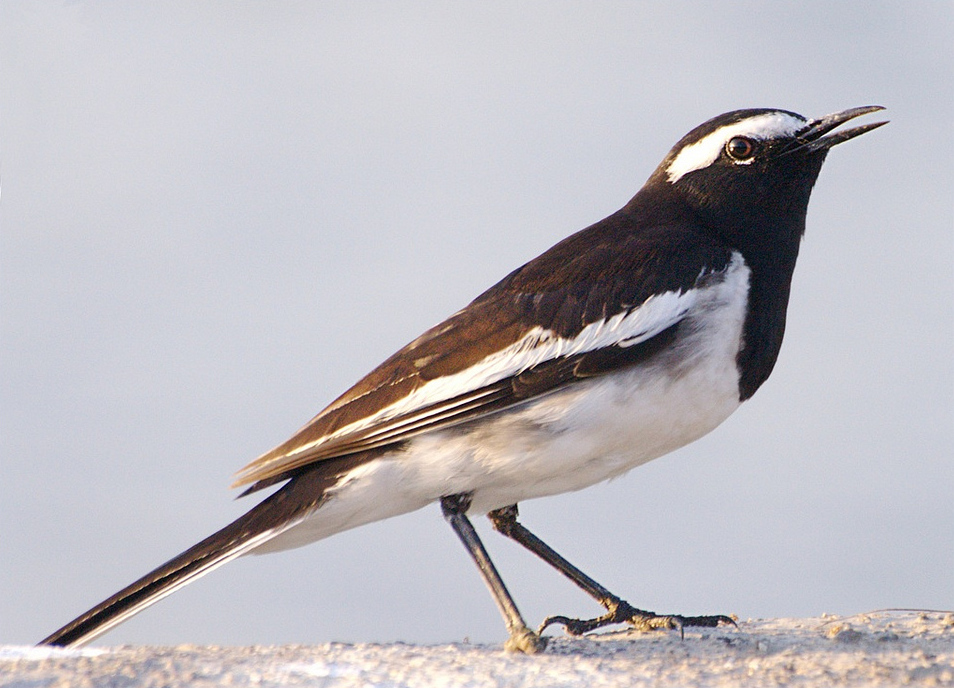
White-browed Wagtail
Motacilla maderaspatensis
Order:
Family:
Size:
18 to 20 centimeters
Weight:
18 to 22 grams
Taxonomy:
Gmelin, JF, 1789
Short Description:
characteristic long, constantly wagging tail of its genus. It has black upperparts, head and breast, with a white supercilium and large white wingbar. Unlike white wagtails it never has white on the forehead. The rest of the underparts are white. The female has the black less intense than in the male. Juveniles are like the females brown-grey where the adult is black. The white-browed wagtail is a resident breeder in India and is endemic to the Indian subcontinent. It is found south of the Himalayas, east of the Indus system and to the west of Bangladesh. It is rare in the higher altitude regions but has been seen in Ladakh on the edge of the Tibetan plateau. In most of India it is found below 1000 m but in southern India it goes up into the hills up to 2200 m. It is very rare in the Indus valley area. It is absent from the Sind region of Pakistan. It is found in open freshwater wetland habitats. It is one of the few Motacilla wagtails that has adapted well to urban habitats and is often found perched on overhead water storages in residential buildings. It is a rare winter visitor to Sri Lanka and have possibly extended their range in recent times. In Pakistan, White Browed Wagtail is sedentary resident, occuring sparingly along major rivers of KPK and Punjab, but more frequent in northern punjab along major canals and on Salt range Lakes. Absent from Baluchistan and Sind. Usually avoids mountainous areas.
Far far away, behind the word mountains, far from the countries Vokalia and Consonantia, there live the blind texts. Separated they live in Bookmarksgrove right at the coast
Lahore,Bahawalpur,Kasur,Multan,Bhakkar,Chakwal,Chiniot,Jhelum,Khanewal,Khushab,Mianwali,Okara,Rajanpur,Rawalpindi,Sialkot,Toba Tek Singh,Khyber,Abbottabad,Mansehra,Chitral,Malakand,Lower Dir,Upper Dir,Peshawar,Neelum
White-browed Wagtails are highly active birds, constantly moving as they hunt for insects on the ground or in shallow water. They are often seen near water bodies, where they feed on small aquatic creatures. Their wagging tail and cheerful chirping make them easily recognizable. These birds are known to be adaptable and can thrive in various environments as long as suitable foraging grounds are available.
Far far away, behind the word mountains, far from the countries Vokalia and Consonantia, there live the blind texts. Separated they live in Bookmarksgrove right at the coast
About Photographer : Hello World
Facebook
Twitter
Instagram
Flicker
LinkedIn

